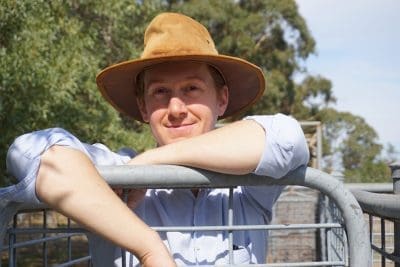HIGHER grain prices drove the National Australia Bank’s Rural Commodities Index up 1.3 percent in July, with prolonged dry conditions across Eastern Australia continuing to push feed prices higher.
NAB’s monthly Rural Commodities Wrap, released today, noted that domestic feed prices have continued to climb, due largely to unabated drought conditions in New South Wales and Queensland and the prospect of a below average 2018-19 winter crop in these regions.
The NAB feedgrain price index rose 1.7pc in July, and has skyrocketed a further 10pc to date in August.

Phin Ziebell
NAB Agribusiness economist, Phin Ziebell, said feedgrain had started moving from Western Australia to the east, a trend likely to continue if lower than average winter and summer crop yields eventuate as predicted. This demand is flowing through to most grains suitable for stock feed, with barley trading at an elevated level.
“Sorghum production is also an emerging issue, and yields are predicted to be poor without a marked improvement in the season. If yields do disappoint, then we’re likely to see domestic grain prices stay high well into 2019,” he said.
Forecasts for national wheat production have been downgraded again, and are in the range of 18.4 million tonnes with an average spring.
“Our New South Wales wheat production forecast is the lowest it has been since 2007-08, at 3.5 million tonnes. Western Australia is experiencing the most favourable conditions in the country, with production levels of around 8.5mt predicted,” he said.
Grain focused Western Australia was the strongest performing state on an overall basis in NAB’s August rural commodities wrap, up 2.8pc, while dairy-heavy Tasmania was weakest losing 1pc.
Low feed and water availability has continued to put restocker cattle prices under pressure, with the Eastern Young Cattle Indicator in the mid-400s range this week.
Demand for finished cattle had been resilient so far this year, but is expected to come under pressure if seasonal conditions continue, NAB said.
“Meat & Livestock Australia has reported that saleyard numbers in eastern Australia increased 28pc year-on-year in the four weeks to August, with the female portion of slaughter numbers reaching drought levels of 53.7pc in June – the highest since July 2014,” Mr Ziebell said.
“Our EYCI forecasts are in the high 400s to low 500s for the coming year, but ongoing tough conditions could challenge this and prices could fall further if water and feed shortages force continued destocking,” he said.
The Bureau of Meteorology’s three month outlook has deteriorated, with the majority of the country predicted to see less than average rainfall through to the end of October. Northern Victoria, southern NSW and the south-east of South Australia are expected to face the most challenging conditions, with Western Australia now likely to see lower than average rainfall as well.
The A$ has traded in a narrower range since late June, and is predicted to appreciate slightly to remain in the mid-US70s range for the fourth quarter of 2018.
Source: NAB
